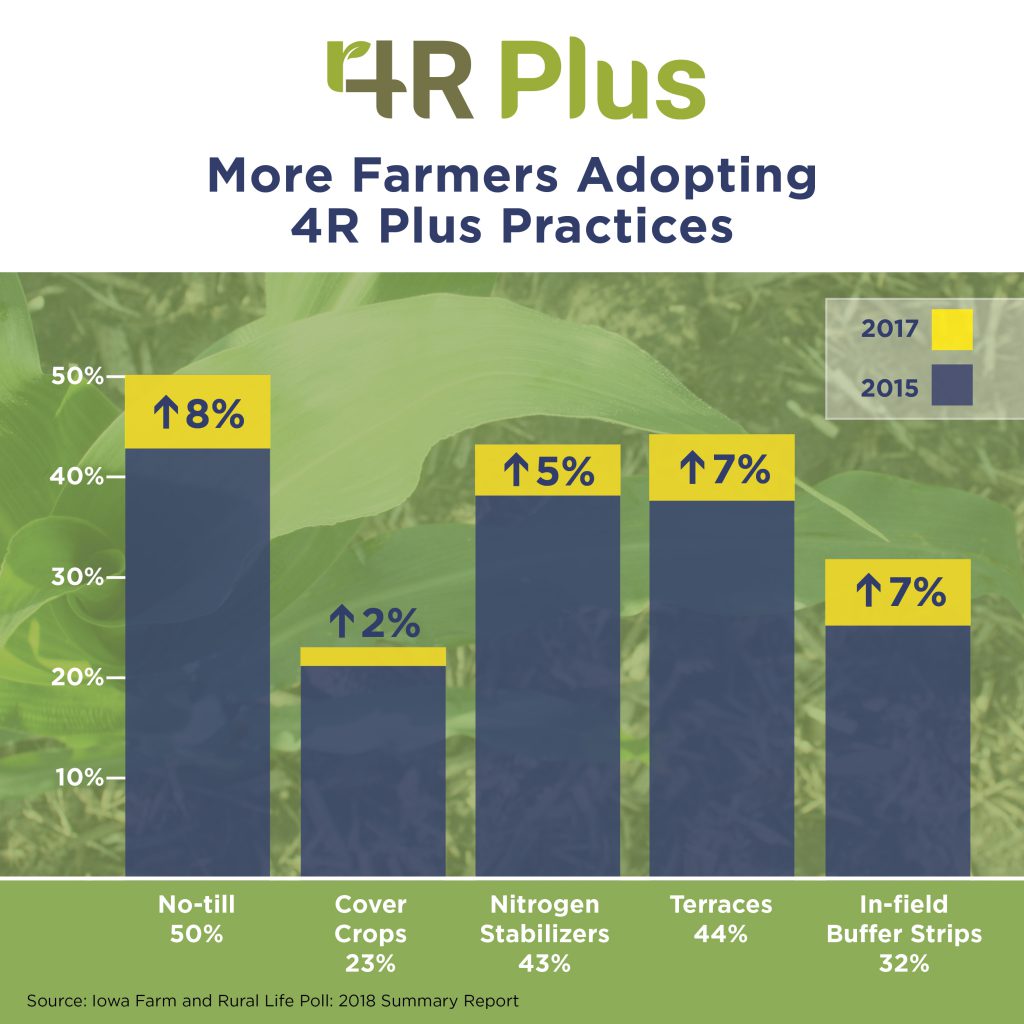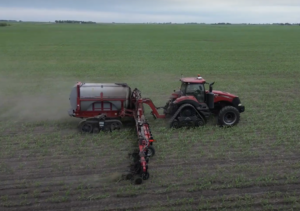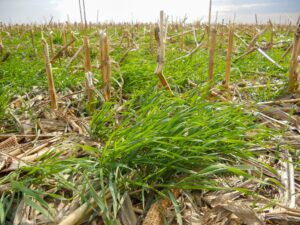
Iowa State University’s Iowa Farm and Rural Life Poll: 2018 Summary Report demonstrates the percentage of Iowa’s farmers who are adopting 4R Plus practices continues to rise. These results are encouraging to J. Arbuckle, an extension sociologist who conducts the poll, because they’re used to track progress toward reaching the goals set by the Iowa Nutrient Reduction Strategy.
Arbuckle works with stakeholders like the Iowa Department of Agriculture and Land Stewardship, as well as other state agencies and commodity groups, to better understand the issues farmers face. The poll is used to help stakeholders learn how farmers perceive certain issues.
The report conducted in 2018 showed 50% of respondents used no-till in 2017 on at least some of the land they farm, up from 42% in 2015; and nearly one-fourth planted cover crops. “There have been substantial shifts in awareness of, attitudes toward, and actual adoption of conservation practices in recent years,” said Arbuckle. “It’s pretty clear that farmers and other agricultural stakeholders have increased efforts in response to the Iowa Nutrient Reduction Strategy.”
The report also asked about farmers’ nutrient stewardship practices. It revealed nitrogen stabilizer use was the most common among 4R practices, used by 43% of respondents in 2017 compared to 38% in 2015. For edge-of-field practices, the use of riparian buffers rose by 10 percentage points to 56%, with the use of terraces and in-field buffer strips rising by 7 percentage points each to 44% and 32%, respectively.

The report also revealed areas of opportunity that can be used to increase the adoption of 4R Plus practices. With more than half of the farmland in Iowa rented and little research focused on the tenant/landowner relationship, Arbuckle set out to learn more.
Over a 10-year period, the report addressed the perception of responsibility between the tenant and landowner as it relates to addressing conservation needs on the farm. The percentage of farmers agreeing or strongly agreeing with the statement, “If conservation practices are needed on the land I rent, it is my responsibility to address the need,” increased from 68% in 2008 to 72% in 2018. Over the same period, the proportion of farmers agreeing with the statement, “My landlord is more interested in maintaining soil and water quality than maximizing profits,” declined by nine percentage points.
“It seems that farmers perceive that landlords’ commitment to conservation is declining,” said Arbuckle. “The data also show a shift toward more geographic and cultural distance between farmers and the landowners they rent from. It’s possible as those differences become greater, the perceived understanding of who is responsible for conservation will widen.
“To increase conservation on rented land we need to engage more landowners, together with their tenants, in the conversation,” he added. “I think it’s especially important to develop strategies to reach landowners who may not understand what it takes to raise a crop to pay the rent and take care of soil health and water quality. Landowners and their farmer partners need to work together; over time these investments will increase productivity of the land and the overall sustainability of agriculture.”
Still, Arbuckle said stakeholders should be encouraged because the report shows that despite the difficult farm economy in recent years, progress is being made addressing conservation and water quality issues.



